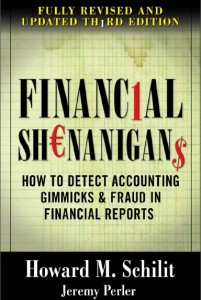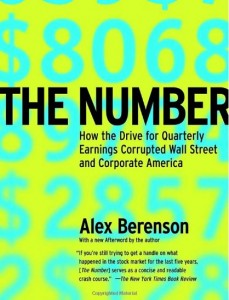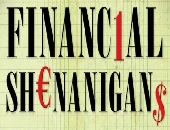There are ample opportunities for financial shenanigans in North American companies, according to Howard Schilit, founder of Schilit Forensics LLC and author of the classic Financial Shenanigans: How to Detect Accounting Gimmicks & Fraud in Financial Reports, first published in 1993 and now in its third edition. He led a mid-day seminar on characteristics of poor accounting practices at the CFA Society Toronto downtown offices on May 30, 2013.
“Financial shenanigans are not necessarily illegal,” explained Schilit, but they are practices that “are not nice to perpetrate on someone” and could, if unchecked, slip into criminality. Given the extensive subject area, two hours was not enough to do full justice to the subject, so Schilit gave a broad outline of the subject area, and sketched in a few memorable examples.
A tell-tale sign of financial shenanigans, Schilit said, is pressure from the top, especially if the goals are unduly optimistic quarter after quarter. As an example, he cited a statement from Joe Nacchio, disgraced CEO of Qwest: “The most important thing we do is meet our numbers. It’s more important than any individual product, … We stop everything else when we don’t make the numbers.” Schilit said the attitude is a “classic” case of unsustainable growth targets pushing management into questionable practices.
Besides management pressure to “make the numbers”, Schilit pointed to a weak board of directors, an ever-changing auditor, and a tumultuous business environment, as fertile breeding grounds for shenanigans. All it takes is frequent changes in key personnel to provide an unsupervised atmosphere, coupled with the ever-present expectation to “make your numbers.”
Schilit went through seven earnings manipulation shenanigans that began with the predictable “recording revenues too soon” and ended with less obvious tactics such as “shifting income to a later period.” The latter could arise in cases where companies seek to avoid taxes or otherwise do not want to appear too mighty. He named names for most examples. Some were expected, such as Enron and Lehman; others were not, such as Krispy Kreme, Sunbeam, and Xerox.
“You should expect to see a pattern of receivables growth that is comparable to earnings growth.” Schilit highly recommended time-longitudinal studies of income and expenses. This tactic led to the discovery of shenanigans at SinoForest, which reported 100 percent growth one year.
Schilit was spurred on by the issue of the third edition of his text “where cash flow entered my life.” He identified four main cash flow (CF) shenanigans: (1) shifting financing CF to operating CF; (2) shifting normal operating CF to investing; (3) inflating operating CF using acquisitions or disposals; and (4) boosting operating CF using unsustainable activities. Time did not permit company-by-company discussion of these shenanigans.
Last, he pointed to two key metrics shenanigans. Another hallmark of disreputable dealings is when a company “showcases misleading metrics that overstate performance” such as redefining what will be counted as revenue, earnings, or cash flow. A related shenanigan is when a company “distorts balance sheet metrics to avoid showing deterioration.”
Schilit had a clear and quick recall of company names and the details of their infringements. His remarks left some seminar participants scrambling to keep up with company details. He closed with a heartfelt reminder to all analysts in the room to “dig deeply” in their individual work, and, within the investment community, to support guidelines that provide “checks and balances” in the system. ª
 Howard Schilit also recommended the 2003 book The Number: How the Drive for Quarterly Earnings Corrupted Wall Street and Corporate America by Alex Berenson. ª
Howard Schilit also recommended the 2003 book The Number: How the Drive for Quarterly Earnings Corrupted Wall Street and Corporate America by Alex Berenson. ª

